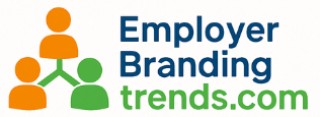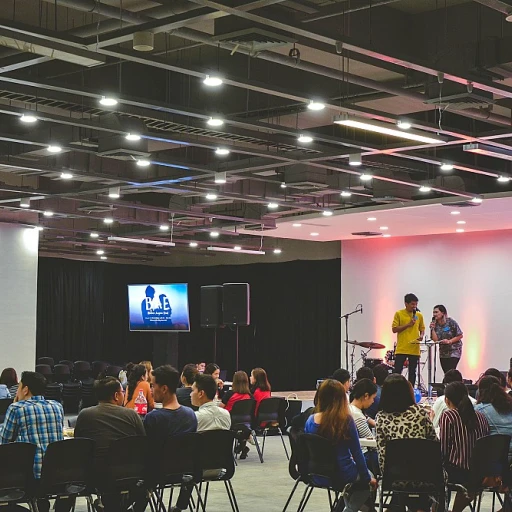
Understanding the Importance of Career Development
The Role of Career Development in Corporate Success
In today's rapidly evolving business environment, career development has emerged as a pivotal factor in both organizational success and employee satisfaction. Companies now recognize that fostering career growth and providing structured development programs not only benefit employees but also align with the organization's long-term strategic objectives. This mutualistic relationship is crucial for achieving overall business success, including enhanced employee engagement and heightened professional growth.
Companies which prioritize career development and aim to create development initiatives tailored to individual career goals often witness several tangible benefits. These include improved productivity, increased loyalty, and reduced turnover rates. Understanding the importance of aligning career paths with organizational goals is vital for companies aspiring to maintain a competitive edge. Indeed, adapting seamlessly to changing workforce dynamics and embracing technology-driven solutions can considerably bolster such efforts. Explore more insights into how corporations are navigating the future of talent mobility to prepare for these challenges.
On an individual level, when employees feel that their company is genuinely invested in their personal and professional advancement, they are more likely to commit to the organization’s mission. This engagement extends beyond just immediate output and taps into their intrinsic motivation for career progression and acquiring new skills. A well-articulated development plan is an instrumental part of creating a culture of learning and growth. These plans help employees identify specific development goals and chart clear pathways that can lead to diverse leadership opportunities in the future.
Identifying Employee Needs and Organizational Goals
Assessing Employee Development Needs and Strategic Goals
In order to create an effective career development program, it is vital to first understand the distinct needs of your employees alongside the overarching goals of your organization. This dual lens approach helps embark on a journey where nurturing individual talents and meeting business objectives go hand in hand. Understanding employee needs begins with a closer inspection of their current skill levels, career ambitions, and perceived gaps in their professional journey. Initiating conversations through surveys, focus groups, or one-on-one discussions can provide invaluable insights into the aspirations of your workforce. This exercise empowers employers to identify which areas require targeted development and what specific skill sets are essential for employees to advance. On the organizational side, identifying strategic goals and the competencies necessary to achieve them is crucial. Whether it's innovation, leadership, or increased efficiency, aligning these goals with employee development plans foster a seamless connection between individual career growth and the company's trajectory. Embedding periodic reviews into your process ensures that your development programs remain adaptive and relevant. By continuously evaluating and realigning development goals, both employees and the organization can navigate the dynamic landscape of business and career progression successfully. By integrating these insights, companies can create structured development plans that not only meet organizational objectives but also fill career paths with learning opportunities, enabling every employee to realize their full potential while contributing to the company’s long-term success. For a deeper understanding of how language effectively influences company culture and development communication, consider exploring the power of language in shaping organizational dynamics.Designing a Comprehensive Career Development Framework
Building Blocks for Employee Career Development
Creating a comprehensive career development framework is crucial for companies looking to enhance both employee satisfaction and organizational success. A thoughtful framework not only aligns with the company’s mission but also resonates with individual career goals. To kickstart this journey, organizations need to:- Establish clear career paths and progression avenues to cater to diverse employee career goals, thereby motivating employees to pursue professional growth actively.
- Design development initiatives that include a mix of leadership training, skills enhancement, and learning opportunities. This mix helps employees feel valued and prepared for current and future roles.
- Create development plans that are both flexible and adaptable, recognizing the need for long-term career growth and immediate skill-building programs. These programs should account for the dynamic nature of today's workforce.
- Encourage employee engagement by fostering a culture that supports ongoing learning. When development goals align with a company’s vision, employees are more likely to invest in their professional development in partnership with the organization.
Implementing Technology in Career Development
Integrating Digital Tools for Modern Careers
Incorporating technology into career development is no longer a choice but a necessity for organizations aiming to stay competitive and significant. Companies are leveraging innovative digital tools to create personalized career paths and learning experiences for staff, ensuring that career progression aligns with their long-term goals.
Modern employee development tools afford several opportunities:
- Customized Learning Management Systems (LMS): LMS platforms allow employees to pursue skills relevant to their professional growth and career aspirations, offering customizable learning paths that support diverse development initiatives.
- Virtual Training Sessions: Adopting virtual training programs enhances flexibility and accessibility, allowing employees to engage in leadership training or skill development at their convenience, which boosts employee engagement.
- Career Development Portals: Employers can use dedicated online portals to facilitate career discussions and plan development goals effectively, offering a platform where employees feel supported in their career growth and progression.
- AI-Powered Career Mapping: Artificial Intelligence can help organizations identify potential career paths for employees based on their skills, performance, and aspirations, aligning individual goals with organizational goals for mutual benefits.
The integration of these digital tools is essential for cohort-based approaches which support continuous learning and overall career development programs in a company. By systematically implementing these tech initiatives, companies empower their workforce to achieve professional growth and fill skill gaps effectively, thus maintaining a competitive edge in the market.
Measuring the Success of Career Development Programs
Evaluating the Efficiency and Impact of Career Development
Effectively measuring the success of career development programs is critical for both employees and organizations. Keeping track of an employee's growth and progression is key to ensuring the development initiatives align with their career goals and the company's objectives. A successful evaluation approach involves a few strategic steps:- Set Clear Development Goals: Having defined employee development goals creates a benchmark for assessment. Align these with organizational growth ambitions to ensure everyone moves in sync.
- Gather Feedback from Employees: Regularly collecting feedback on development experiences helps refine the programs to better serve professional growth needs. Employee engagement surveys and focus group discussions are useful methods.
- Analyze Performance Metrics: Utilize performance data to assess skills acquired through training sessions. Metrics such as productivity rates, quality of work, and achievement of career milestones offer tangible proof of success.
- Track Leadership Development: Leadership training programs should be scored based on the leadership impact in the organization. Recognizing leadership emergence translates organizational goals to personal development achievements.
- Review Career Path Progression: Ensure employees feel the effects of their career paths by periodically reviewing their professional progression in comparison to their career development plan.
Adapting to Changing Workforce Dynamics
Adapting to Evolving Workforce Needs
In the ever-evolving landscape of career development, it's crucial for organizations to stay flexible and adaptable in response to changing workforce dynamics. This is not just about providing career growth opportunities but understanding the multifaceted nature of employees' professional aspirations and needs.
Implementing a robust career development plan is essential for aligning the organization's goals with individual career paths. Employees increasingly seek professional growth in environments that support continuous learning and skills enhancement. This drives the need for innovative development programs that combine traditional training with technology-driven learning platforms.
Employee engagement plays a significant role in ensuring the success of these development initiatives. Organizations need to constantly evaluate their development goals and adapt them as per the changing career goals of their workforce. Providing platforms for feedback and recognizing long-term employee career progression helps create a culture where employees feel valued and motivated to grow.
Leadership plays a pivotal role in guiding these transitions. By fostering a supportive environment, leadership can not only help retain top talent but also fill potential gaps in skills and experience that could hinder organizational growth. Successful development programs are ones that can evolve to meet the demands of both the market and the workforce, ensuring sustained professional development for all employees involved.













